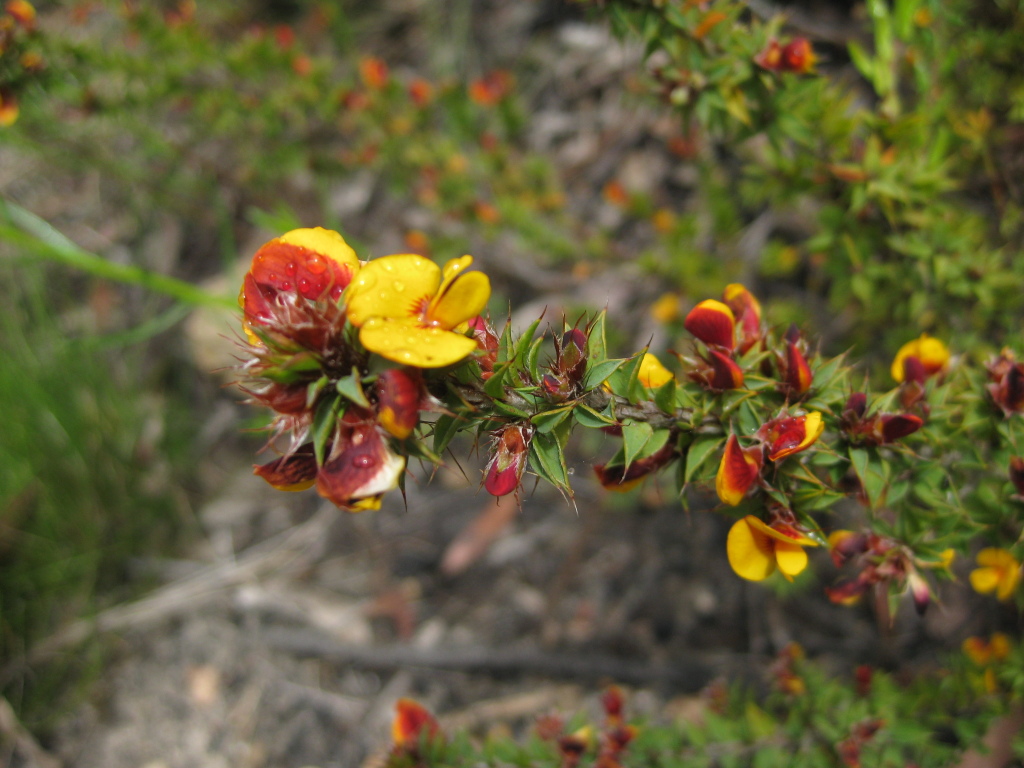Pultenaea costata
H.B.Will. Ribbed Bush-peaSpreading shrub to 1 m high; stems terete, with pale hairs when young. Leaves alternate, ovate to lanceolate, 7–15 mm long 2–5 mm wide, concave to conduplicate, glabrous; apex ± recurved, tapered to a long pungent point; surfaces ± concolorous; lower surface with 3–5 prominent veins; margin flat or slightly incurved, minutely scabrous; stipules lanceolate c. 7 mm long, dark brown, tapered to long, very slender, recurved tips. Inflorescence a dense head-like cluster of 5–8 flowers; floral leaves grading into floral bracts c. 8 mm long with apex divided into 2 slender tips; calyx c. 9 mm long, tube glabrous, lobes covered with long, white hairs; bracteoles attached at base of calyx tube, ovate c. 8 mm long with a basal tuft of hairs and ciliate margins; standard 13–15 mm wide; ovary and base of style covered with long, pale hairs. Pod turgid, enclosed by calyx. Flowers Oct.–Nov.
GGr, DunT. Confined to the Grampians where restricted to the higher parts of the northern ranges.
One of several presumed hybrid populations involving P. costata and P. mollis occurs near Sundial Peak in the Wonderland Range. Very narrow-leafed plants at this and at 1 or 2 other localities in the Grampians have been confused with P. acerosa. Pultenaea costata can be distinguished by the very long hairs on the calyx lobes, the long, dark brown, glabrous, recurved stipules and by the standard which is distinctly wider than long. There are no authentic records of P. acerosa from the Grampians.
Corrick, M.G. (1996). Pultenaea. In: Walsh, N.G.; Entwisle, T.J., Flora of Victoria Vol. 3, Dicotyledons Winteraceae to Myrtaceae, pp. 765–793. Inkata Press, Melbourne.
 Spinning
Spinning